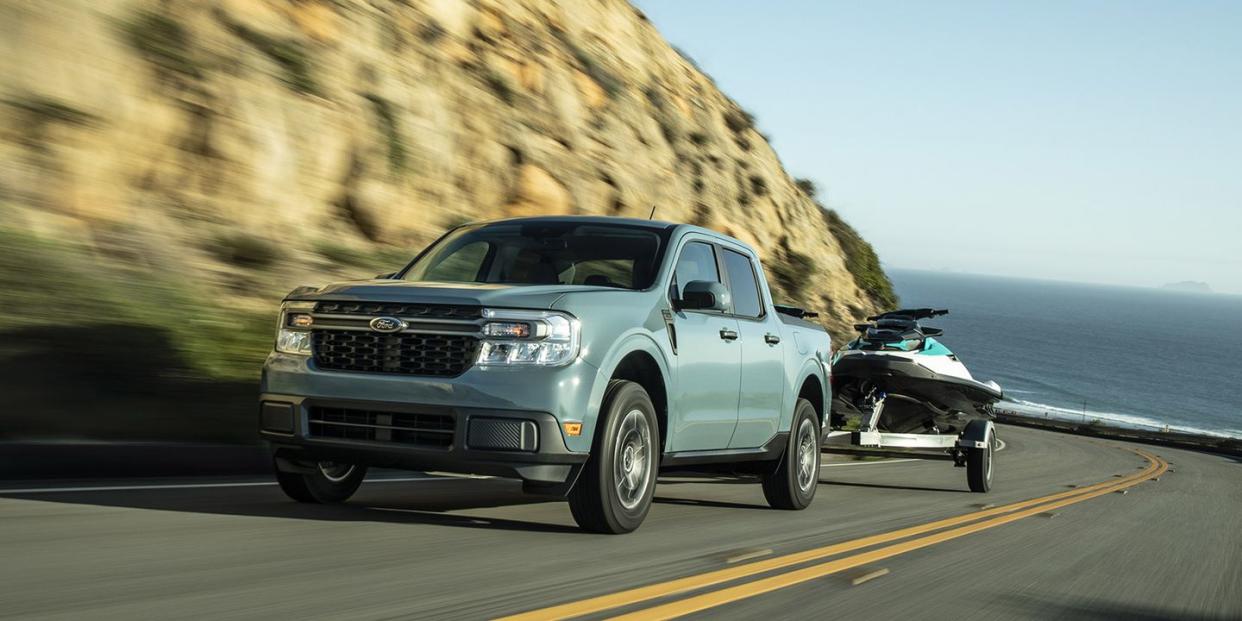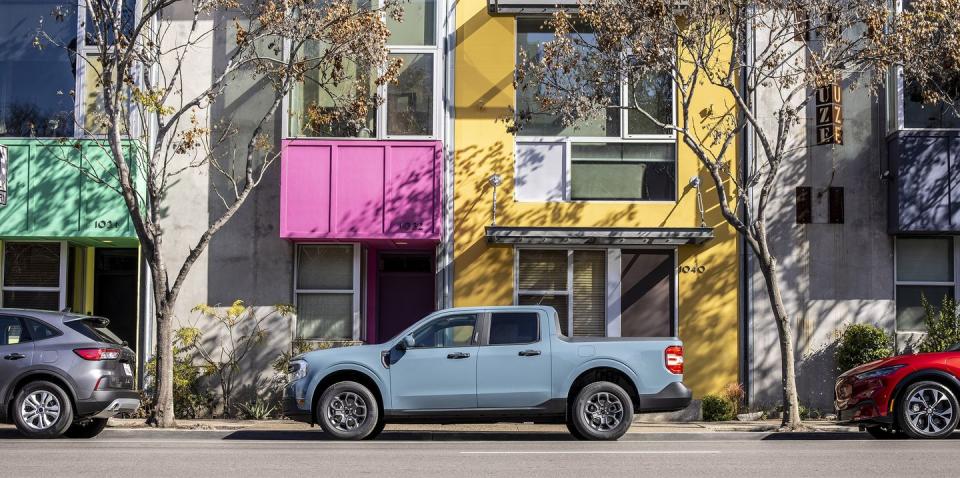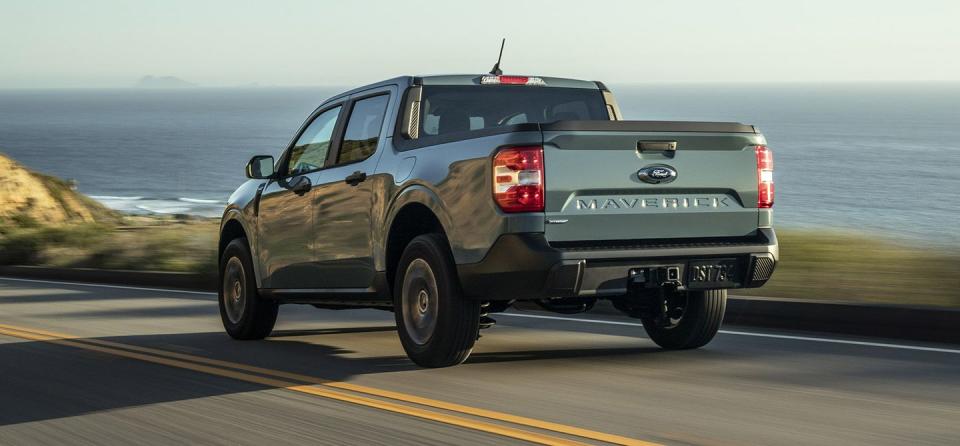The Ford Maverick Had to Be a Hybrid

Ford, using a mix of imposed media embargoes, carefully metered press access and psychological manipulation, orchestrated an orgiastic blowout of coverage for the debut of its new Maverick compact truck. But missing from the Vesuvian spew of videos, blog posts and pandering news items was some important perspective. That includes acknowledgement that the Maverick will be the first small truck to be sold in the United States as a gas-electric hybrid. And the regulatory reason that the Maverick had to be available as a hybrid.
It comes down to how the government calculates fuel economy targets for light trucks. It’s a convoluted and somewhat contradictory voodoo formula that applies different efficiency standards to vehicles based upon their “footprint.” That is basically, the area a vehicle occupies – its length multiplied by its track width. The bigger shadow a truck casts, the easier the fuel economy standards it must meet. It’s a method of regulation that’s practically killed the regular cab pickup truck and made introducing smaller trucks, until the Maverick, a virtual impossibility.
Think of it this way. Say you’re Toyota and you have the Tacoma to sell. Back in 2014, the regular cab Taco ran 190.4-inches long while the extended Access Cab model was 208.1-inches. The longest version that year was the Double Cab longbed at 221.3-inches. But while they differed in length, they were all basically the same truck. They were available with the same four- and six-cylinder engines; used the same transmission and powertrain components and shared virtually all their chassis pieces. Most importantly, all the 4x2 models had a 61.0-inch wide track while the 4x4s and PreRunner (4x2s that look like 4x4s) had 63.0-inch front and 63.4-inch rear tracks. Now let’s do some math.

Multiply the regular cab 2014 Tacoma 4x2’s 190.4-inch wheelbase by its 61.0-inch track and what results is a footprint of 11,614.4 square inches (80.66 square feet). Meanwhile a similar Access Cab model went out at 12,694.1 square inches (88.15 square feet) and the Double Cab crushed that at 13,300.13 square inches (92.36 square feet). That’s more than nine percent larger for the Access Cab and almost 15 percent larger for the Double Cab. Those numbers grow even more stark for wider 4x4 models.
Now it gets weird. Here’s the formula for determining the target fuel economy (T) of light trucks to meet Corporate Average Fuel Economy (CAFÉ) goals. These standards went into effect for 2011.
T = [1/a + (1/b – 1/a) e(x-c)/d/(1 + e(x-c)/d)]-1
where:
T – fuel economy target, mpg
a – maximum fuel economy target, mpg
b – minimum fuel economy target, mpg
c – footprint value at which the fuel economy target is midway between a and b, in square feet
d – parameter defining the rate at which the value of targets decline from the largest to smallest values, in square feet
e = 2.718
x – footprint of the vehicle model, in square feet
Footprint, that “x” value, matters a lot in this equation. And it matters even more in the context of managing a portfolio of diverse products across a manufacturer’s range. What it meant for Toyota back in 2014 was that there’d be no regular cab Tacoma for 2015. And there hasn’t been a regular cab Tacoma since. The Tundra regular cab was offed after the 2014 model year as well.
For manufacturers, killing the regular cab trucks was no great loss of business. Consumers have a strong preference for extended and crew cab trucks and the companies were unlikely to lose marginal sales. Larger medium- and heavy-duty trucks for commercial customers are still available with regular cabs.

But for the same reason that regular cabs had to die, so did the possibility of truly small trucks. Over the years, I’ve asked virtually all the truck builders about opportunities for a small truck in America. They all recognized there was a market, but that with the current footprint regulations there was no way to profitably get one to market. But with the hybrid version as the base configuration, Ford seems to have overcome that hurdle.
Hybrid systems have become more robust in operation and much cheaper to build. Ford and Toyota have been out front on hybrids for a while, so it's a good bet that Toyota could be next to offer a mini truck of its own. Toyota’s strength in the truck market has long been the Tacoma, so there’s no reason not to counterattack against the Maverick. After that, the other truck builders will follow in the hope of attracting entry-level buyers who become lifelong customers. And hybridization is the secret sauce that makes it possible.
Overhype and ridiculous hyperbole aside, the Maverick will herald the return of mini-truckin’. Dude. And dudettes.
You Might Also Like

